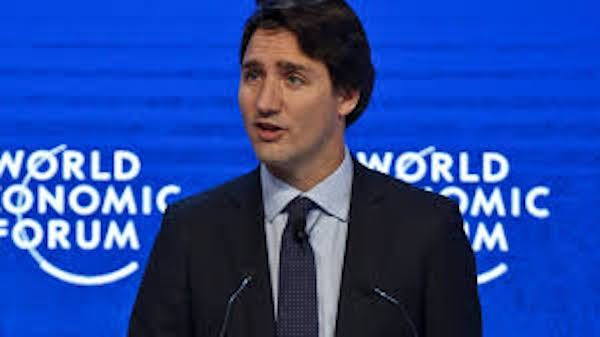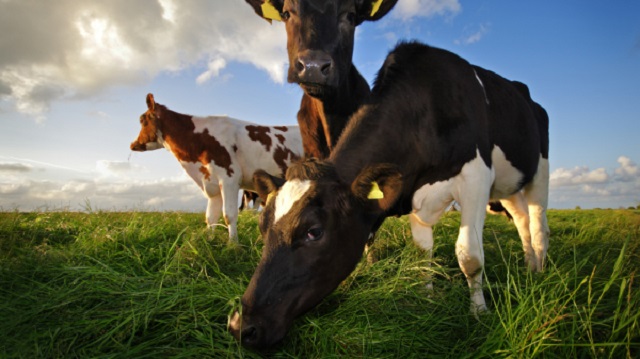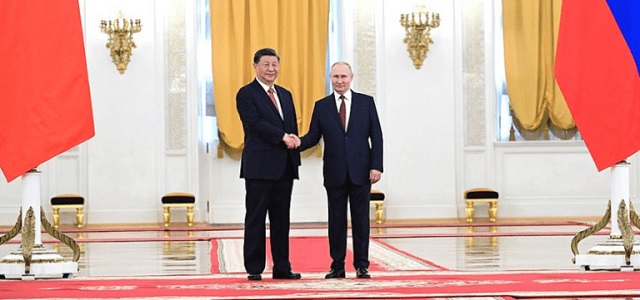International
British political commentator says Trudeau must go. World’s largest political youth organization horrified at Canada.

Canadians have always loved it when the rest of the world talks about our nation. Normally it’s because of an athlete or an artist who is on top of their game. Sometimes it’s our military accomplishments, or our peacekeeping leadership. Currently, Canada is making headlines for all the wrong reasons as the rest of the world struggles to understand what is happening in Canada to protestors who are clearly not violent (even if some find them incredibly annoying).
Best selling author Douglas Murray is a journalist with The Spectator, based in Britain.

Douglas Murray’s latest publication, The Madness of Crowds was a bestseller and ‘book of the year’ for The Times and The Sunday Times. Murray has also contributed to The Wall Street Journal, The Times, The Sunday Times, The Sun, The Evening Standard, and is a regular contributor to National Review. Murray founded the Centre for Social Cohesion, the first British think-tank studying extremism and terrorism.
This week, Douglas Murray was featured in this interview on SkyNews Australia.
Meanwhile in India, Tajinder Pal Singh Bagga, the National Secretary of the world’s largest youth political organization (called Bharatiya Janata Party Youth), has spoken out about the situation in Canada. The parent organization of the youth group, the Bharatiya Janata Party (BJP) is the World’s largest Political Party. Indian Prime Minister Narendra Modi belongs to this political party.
After seeing video from Canadian news organizations, Tajinder Pal Singh Bagga expressed horror at the treatment of peaceful protestors by the Canadian authorities.
I am not able to eat anything from last 24 hours after watching this video. how can @JustinTrudeau attack his own country people. Justin Converted beautiful Canada into Banana Republic. #TrudeauDictatorshipMustGo pic.twitter.com/WWwgMN4OsV
— Tajinder Pal Singh Bagga (@TajinderBagga) February 19, 2022
Agriculture
Research Suggests Cattle Raising May Reduce Emissions

From Heartland Daily News
The United Nations Food and Agriculture Organization estimates that livestock production causes 11.1 of global greenhouse gas emissions worldwide, recommending people eat less meat to fight climate change.
Yet recent research suggests that under some climatic conditions or ecosystems, at least, cattle raising may actually result in lower emissions.
Alltech and Archbold examined the emissions from cattle raising in wetlands and ground that is regularly water laden. They found that although cattle accounted for 19 percent to 30 percent of emissions, the vast majority of the methane produced there was from the soil itself and the decomposing plant and animal life. As a result, they found, removing the cows actually produced a net increase in methane emissions.
Vaughn Holder, Ph.D., research project manager for beef nutrition at Alltech, who with Betsey Boughton, Ph.D., director of agroecology at Archbold, studied the impacts that cattle production has on the ecosystem on a wetlands pasture at Buck Island Ranch, about 150 miles northwest of Miami, Florida, notes that the production of agricultural emissions is more complex than simply ruminant eats plants = more methane emissions.
“There is a far more complex process in agriculture than it is in fossil fuel systems,” Holder told Just the News, which wrote:
Cattle are part of a carbon cycle. So if you just model the emissions coming from the animal, you’re missing the rest of the ecosystem, Holder said, which is absorbing carbon as a result of the animal being on the land.
When cattle graze on land, the plants prioritize root growth over the plant matter above the surface. The deeper the roots, the more plants sequester carbon in the soil through the photosynthesis process.
Grazing also removes grasses from a pasture, which reduces the dead plant matter that falls to the soil and decomposes, which also produces greenhouse gasses.
At the Buck Island Ranch, Boughton and her team measured the amount of greenhouse gases emitted on a pasture that had no grazing and compared it to pasture that had grazing. The data suggested grazing livestock were a net carbon sink compared to no grazing.
Of course, what’s true of a wetland’s ecosystem may not translate into more arid lands were cattle are often grazed, so more research is needed in order to know how cattle impact emissions in other environments.
However, as Holder and Boughton point out, quite aside from reducing emissions from wetlands, cattle and other livestock also consume a lot of plants humans can’t eat, turning them into them into edible proteins humans can consume, increasing global food security while reducing the emissions from the decomposition of the plants when they otherwise naturally die. In addition, livestock also consume a lot of food byproducts that humans either can’t or prefer not to eat, like orange pulp used in orange juice production. Although such byproducts can be used in composting, Holder notes, “composting increases emissions five times more than feeding it to dairy cows and byproducts disposed of in landfills produced 50 times more emissions than if it is fed to dairy cows.”
The research suggests that when accounting for livestock emissions, one should do an all-things- considered comparison, accounting for not just the emissions from cattle and sheep, but also from the material they consume that otherwise would have produced emissions by other means.
Sources: Just the News; Understanding the Carbon Cycle on a Cattle Ranch
Automotive
Forget Tariffs: Biden Should Look to Domestic Mining to Thwart Chinese EVs

Fr0m Heartland Daily News
By Rick Whitbeck
The Biden administration’s decision to raise tariffs on Chinese-manufactured electric vehicles, steel, computer chips, and other technological products is the epitome of a penny wise and a pound foolish.
To much of the nation, the news was a reelection flip-flop, or an attempt to prop up the electric vehicle industry Biden has prioritized since he took office, as part of his green agenda. The international supply chain for electric vehicles isn’t going to magically stop running through the Chinese Communist Party anytime soon.
If Biden really wanted to curb Chinese geopolitical power, he would make fundamental changes to his administration’s history of attacking domestic mining opportunities. Allowing development of copper, graphite, nickel, cobalt, and other critical and strategic minerals right here at home would go much further than imposing tariffs.
Biden has demonstrated affinity for promoting “net zero” policies and forcing transitions away from traditional energy supplies of oil, gas, and coal. In a nutshell, the attacks on domestic mining projects seem completely counterproductive.
According to the International Energy Agency, staggering quantities of subsurface elements will need to be mined by at least five times their current worldwide production by 2040 to meet the Biden administration’s green energy goals. Graphite, cobalt, and lithium all will be needed in quantities exceeding 25 times (or more) their current supplies. In the next quarter century, we will need twice as much copper than has been produced in the last 3,000 years. All of which is impossible when Biden won’t let us dig.
The U.S. has tremendous opportunities to have our own mineral resources. Yet, the Biden administration has thwarted their development at nearly every turn. For example, massive copper and nickel deposits could be developed in Minnesota at the Twin Metals and Duluth Complex projects, but Biden has ordered each of them off-limits for development. The Resolution Copper prospect in Arizona met a similar fate, with the Department of Interior placing on “indefinite hold” its approval.
The Western Hemisphere’s largest copper prospect is Alaska’s Pebble Mine. Kowtowing to environmental extremists—and ignoring a clean U.S. Army Corps of Engineers’ Final Environmental Impact Statement—the Environmental Protection Agency continues to stymie progress on a deposit worth more than $500 billion. All the while shutting down the possibility of 700 full-time jobs in an area of rural Alaska that has seasonal unemployment exceeding 20%.
Alaska has been the target of more than 60 administrative and executive orders targeting its resource-based economy since Biden assumed office. One of the most recent took place on Earth Day, when a congressionally-authorized road to the Ambler Mining District—an area rich in copper, zinc, and other strategic and critical minerals—was stopped by the Department of Interior.
Just like with the Resolution mine in Arizona, the Interior Department used “Indigenous opposition” as its deciding factor, even though many villages and tribes closest to the mining district publicly support the project and its future employment opportunities. In Alaska, the Biden administration literally blocks the road to the minerals Biden’s tariffs claim to protect.
Alaska’s governor, Michael Dunleavy, along with its entire congressional delegation, has been openly critical of the continued hypocrisy of the Biden administration when it comes to talking “net zero” and acting with vigor to oppose domestic mining projects. The same response has come from many within the Minnesota and Arizona congressional community. They’ve been unable to break through to the administration, as Team Biden chooses to listen to eco-activists and career bureaucrats with an anti-development agenda.
What would hurt China, empower America, and begin to chip away at the global imbalance would be mining and processing our crucial minerals and elements domestically. Let’s see if the Biden administration wises up to that fact, or if America tires of being subservient to the CCP and makes fundamental changes to federal leadership in November.
Rick Whitbeck is the Alaska State Director for Power The Future, a national nonprofit organization that advocates for American energy jobs and fights back against economy-killing and family-destroying environmental extremism. Contact him at [email protected] and follow him on X (formerly Twitter) @PTFAlaska
This article was originally published by RealClearEnergy and made available via RealClearWire.
To read more about domestic mining to escape reliance on China, click here.
To read more about clean energy and mining, click here.










